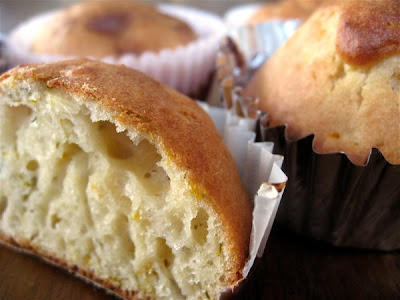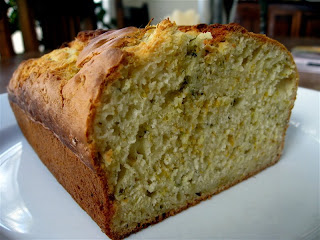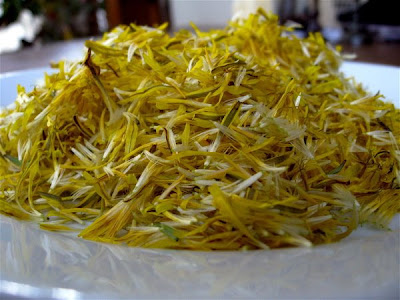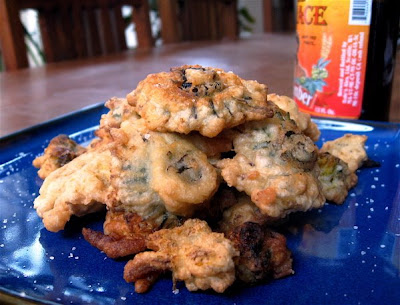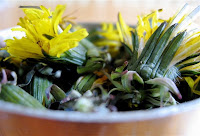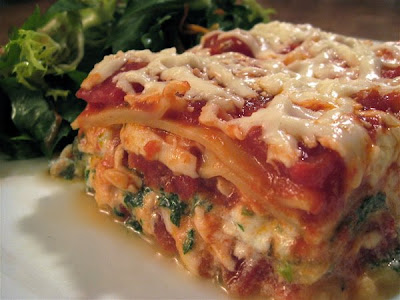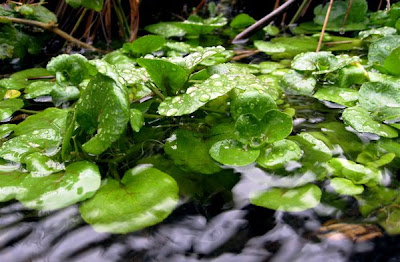 Dear readers, this forager is a hurtin’ pup. Maybe part of the problem is he isn’t exactly a pup anymore—but still acts like one. Last Saturday I took my son skiing. It was one of those special days, snowing even in Seattle as we pulled out of town. We drove up to Snoqualmie Pass and the white stuff was really coming down, fat fluffy flakes, not the usual Cascade concrete. I explained to Riley that this was the sort of day powder hounds dream of, that we needed to take full advantage and ski all day. Incredibly, no one was on the mountain. We skied onto the lift after each run. Eight more inches must have fallen while we were there—fresh tracks of bottomless, knee-deep powder if you picked the right line. Glorious skiing.
Dear readers, this forager is a hurtin’ pup. Maybe part of the problem is he isn’t exactly a pup anymore—but still acts like one. Last Saturday I took my son skiing. It was one of those special days, snowing even in Seattle as we pulled out of town. We drove up to Snoqualmie Pass and the white stuff was really coming down, fat fluffy flakes, not the usual Cascade concrete. I explained to Riley that this was the sort of day powder hounds dream of, that we needed to take full advantage and ski all day. Incredibly, no one was on the mountain. We skied onto the lift after each run. Eight more inches must have fallen while we were there—fresh tracks of bottomless, knee-deep powder if you picked the right line. Glorious skiing.
And then I tried stepping out of the car after the drive home. Yikes. My body was trashed. One of the hazards of a snow day like that is that snow is pelting your goggles, the light is flat, and visibility is generally poor. More than once I dropped off a steep pitch without knowing it, only to feel the landing a moment later, and since I was on my ancient tele boards and not alpine, my body absorbed most of the impact.
So here I am laid up on my back. It’s a back with serious issues. For the past year I’ve been trying to heal myself by cutting out one of my favorite forms of exercise, a game that’s terribly hard on the body but is a game nonetheless and so beats the hell out of jogging: squash. The net result has been 20 pounds gained and no improvement to the back. It’s time to shed the extra poundage. I’ve decided to initiate the process with a cleansing. We do this occasionally with a few nutty friends, usually in the spring. The first one started years ago as a dare, a friendly bit of one-upsmanship among pals, then over time we worked up to a brutal 10-day fast. Since then we’ve toned it down a bit.
 This cleansing comes from The Source. Marty found it. We adapted the recipes somewhat to make use of our wild foods, which are generally healthier for you than domesticated.
This cleansing comes from The Source. Marty found it. We adapted the recipes somewhat to make use of our wild foods, which are generally healthier for you than domesticated.
The first few days were all liquids. For breakfast we made fruit smoothies with either antioxidant-rich wild blackberries or huckleberries foraged last summer, along with fresh pineapple, pineapple juice, flaxseed oil, flax meal, and rice milk. I’ve never been much of a smoothie fan—I prefer my fruits whole—but this was surprisingly tasty.
Wild Berry De-Tox Smoothie
1 1/2 cups wild berries (or mango, papaya, etc.)
1 cup fresh pineapple (optional)
1 cup pineapple juice
3/4 cup unsweetened soy or rice milk
1 1/2 tsp fresh ginger
1 heaping tbsp flax meal
1 tsp flax oil
1 tbsp probiotic powder or liquid
Combine into blender and whir.
For lunch and dinner we made Miso Soup with Shitaki and Morel Mushrooms. You’d be surprised how far miso soup can take you. This is all we ate for three days, along with water, tea, and occasional cups of organic veggie juice as permitted by the plan.
Shitake-Morel Miso Soup
1-2 oz dried morels (or other mushroom), soaked in 1 cup warm water, about 30 min.
7 cups water
1 small onion, thinly sliced
1 carrot, thinly sliced into rounds
10 fresh shitake mushrooms, de-stemmed and thinly sliced
2 slices fresh ginger, unpeeled, 1/4 inch thick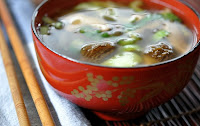
2 tbsp white miso
3 stalks bok choy, thinly sliced
dried seaweed (optional)
tamari
1. Prep vegetables while dried mushrooms are reconstituting. Place all vegetables except bok choy in large pot with water. Cover and bring to boil. Reduce heat and simmer 20-40 minutes.
2. Slice soaking mushrooms and add to pot with water.
3. When soup is finished, turn off heat, discard ginger, and stir in miso. Next add bok choy. Serve with tamari.
 Over the course of the cleansing fast I developed a fondness for stinging nettle tea. It’s a wonderful spring tonic. People have known about the restorative effects of nettles for centuries. Being one of the first greens of the season, they have a long history of use as a way to transition the body from the rigors of winter into the spring outdoor work season. As a fasting food, they’re useful for both cleansing the system and injecting nutrients that the body craves at this time of year. I made the tea from nettles I had collected, dried, and pulverized last year.
Over the course of the cleansing fast I developed a fondness for stinging nettle tea. It’s a wonderful spring tonic. People have known about the restorative effects of nettles for centuries. Being one of the first greens of the season, they have a long history of use as a way to transition the body from the rigors of winter into the spring outdoor work season. As a fasting food, they’re useful for both cleansing the system and injecting nutrients that the body craves at this time of year. I made the tea from nettles I had collected, dried, and pulverized last year.
 On Day Four we introduced Kale and White Bean Soup to the dinner menu. The Brassica family is renowned for its cleansing properties.
On Day Four we introduced Kale and White Bean Soup to the dinner menu. The Brassica family is renowned for its cleansing properties.
Saturday night, after six days, we broke the fast at our friends’ annual St. Patty’s Day dinner. Who am I to turn down an expertly roasted corned beef? Mostly, though, I stuck to the root vegetables—and a single wee nip because I could feel Old Man Winter making one last claim on my health. The next day we were back into cleansing mode. We ate the Kale and White Bean Soup for lunch and Sweet and Spicy Greens for dinner. For the latter I harvested my first batch of dandelion greens in the backyard and mixed them with collards. Dandelions have been used for centuries as a liver cleanser, among their many other medicinal properties.
Sweet and Spicy Greens
1 bunch collard greens, chopped
1 bunch dandelion greens
4 cloves garlic, minced
1/2 tsp red pepper flakes
1 tbsp olive oil
2-3 tbsp apple juice
pinch salt
 In large pan or skillet, saute garlic and red pepper flakes in olive oil over medium heat. Add greens with apple juice and simmer, covered, on low for 15 minutes. Season to taste.
In large pan or skillet, saute garlic and red pepper flakes in olive oil over medium heat. Add greens with apple juice and simmer, covered, on low for 15 minutes. Season to taste.
This was by far the easiest, least taxing fast I’ve undertaken. Who knows if a week is really enough to give the body a rest? If nothing else, you feel healthier in your mind, and that’s half the battle right there. I tend to be highly suspicious of books that tell you how to “unleash your inner energy” and so on. That said, the idea of regular fasting strikes me as a fairly sane practice in the face of all the toxins we’re confronted with on a daily basis. Let’s face it, we’ve polluted our air and our water—the very foundations of life—and regardless of what the EPA says about human health and acceptable levels of contaminants in our environment, simple common sense would say that all of us are affected by what we eat, drink, and breathe. Purging your system periodically makes sense to me—as does giving your body a dose of wild foods.
Like this:
Like Loading...
 After posting about my spring de-tox, it occurred to me that Stinging Nettle Tea really deserves its own post. This is a tonic everyone should know about, a tonic that’s survived through the ages because it works.
After posting about my spring de-tox, it occurred to me that Stinging Nettle Tea really deserves its own post. This is a tonic everyone should know about, a tonic that’s survived through the ages because it works. The month of March, I was surprised to learn from my family doctor, is the worst time for flu, and I found this out first-hand toward the end of my de-tox. Who knows whether thrice-daily cups of Nettle Tea boosted my immune system, but I was able to lick the flu relatively easily without suffering the worst of its blows.
The month of March, I was surprised to learn from my family doctor, is the worst time for flu, and I found this out first-hand toward the end of my de-tox. Who knows whether thrice-daily cups of Nettle Tea boosted my immune system, but I was able to lick the flu relatively easily without suffering the worst of its blows. I scavenged a window screen and lay it across stacks of books at the four corners. (You could probably use baking pans in an oven turned very low, too.) Now employ a fan to blow off moisture. Turn the nettles periodically with tongs. Drying time will vary by local climate. Here in the Pacific Northwest it took a few days to fully dry my batch. Once dried, the nettles lose their sting.
I scavenged a window screen and lay it across stacks of books at the four corners. (You could probably use baking pans in an oven turned very low, too.) Now employ a fan to blow off moisture. Turn the nettles periodically with tongs. Drying time will vary by local climate. Here in the Pacific Northwest it took a few days to fully dry my batch. Once dried, the nettles lose their sting.






